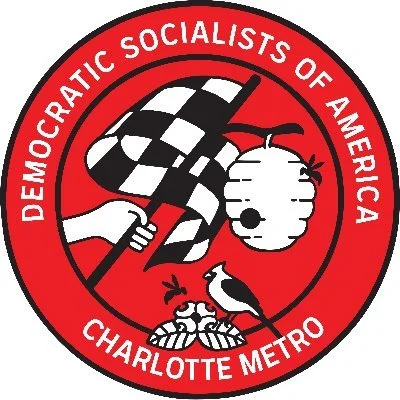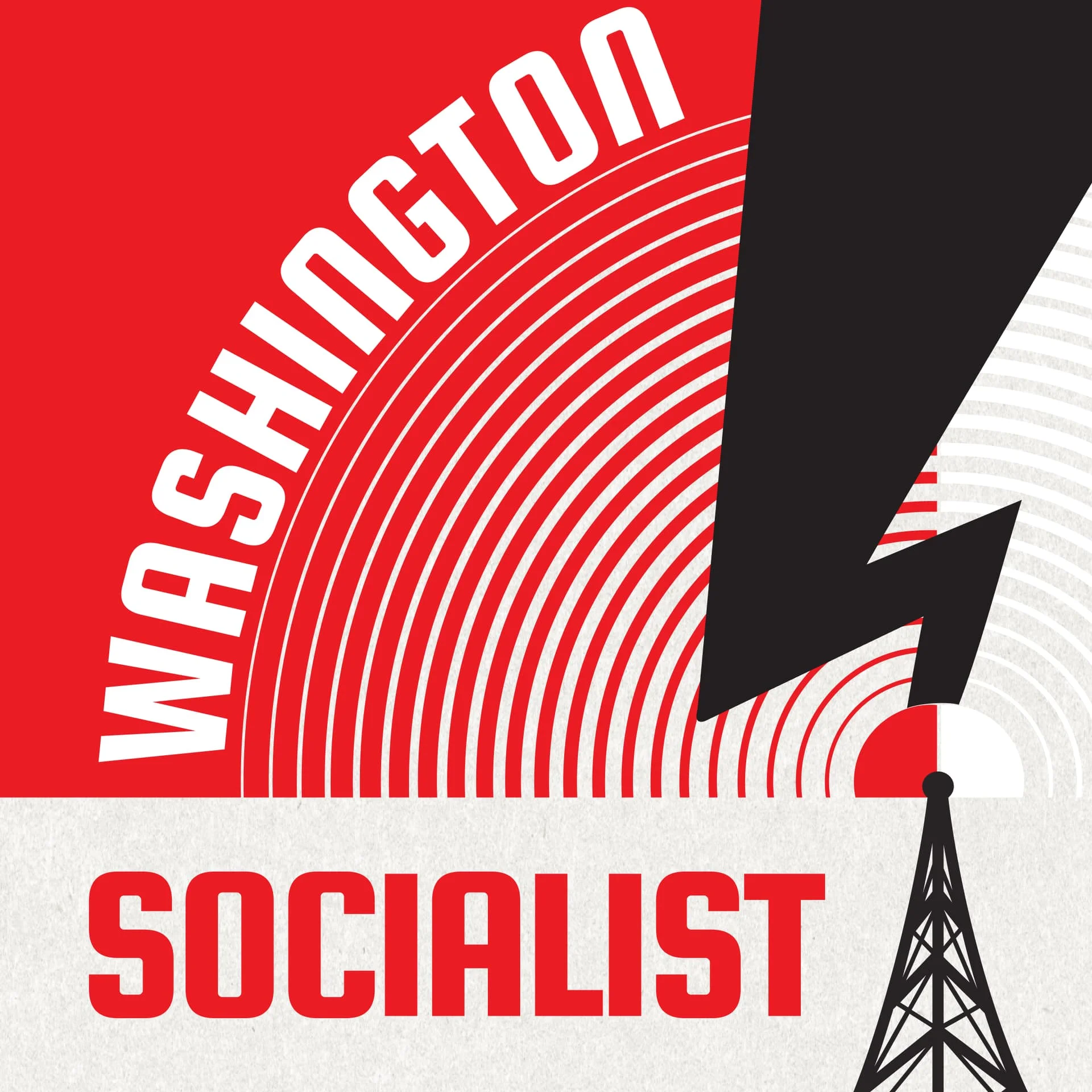
Breaking Barriers: Advocating for Abortion Access in NY State with NYCLU and NYAAF
With the battle over abortion rights raging in the United States at local, state, and national levels, we here in New York state cannot become complacent that access to abortion will always be guaranteed here. Economic, social, and logistical barriers prevent many people from accessing the care they need, and without decisive action to change that, working-class New York residents as well as people living in the surrounding area will continue to be at risk. Tonight we're joined live by Chelsea Williams-Diggs of New York Abortion Access Fund and Allie Bohm of New York Civil Liberties Union to discuss the state of abortion access in New York state and their advocacy for the statewide Reproductive Freedom and Equity Fund.
Tell your legislators that you support increasing access to abortion in New York state: https://action.aclu.org/send-message/protect-abortion-access-new-york
Follow and support the New York Abortion Access Fund at nyaaf.org.

“Inbuilt”: Zionism, Gaza, and Genocide

But transfer was inevitable and inbuilt into Zionism – because it sought
Benny Morris, The Birth of the Palestinian Refugee Problem Revisited (Cambridge: Cambridge University Press, 2004), p. 60
to transform a land which was ‘Arab’ into a ‘Jewish’ state and a Jewish
state could not have arisen without a major displacement of Arab population; and because this aim automatically produced resistance among the Arabs which, in turn, persuaded the Yishuv’s leaders that a hostile Arab majority or large minority could not remain in place if a Jewish state was to arise or safely endure.
On a frigid night, December 5, 2023, Joe Biden visited Boston to raise money for his re-election campaign. The president was received by a large group of citizens who protested in unconditional support for Israel and, by extension, its genocidal actions against the Palestinians.
In Washington, on the same day as Biden’s visit, the House of Representatives passed a resolution explicitly equating anti-Zionism with anti-Semitism, and defining many common pro-Palestinian slogans like “from the river to the sea, Palestine will be free,” as anti-Semitic.
This is a blatant attack on freedom of speech, and signifies a dangerous step toward the criminalization of legitimate political dissent.
As a Boston local living near many universities, I have been disappointed to see local student leaders threatened with strong disciplinary sanctions, just as students were threatened during the Vietnam anti-war protests.
_._
“I know firsthand that Israel has created an apartheid reality within its borders and through its occupation. The parallels with my beloved South Africa are truly painful,” (Archbishop Desmond Tutu, 2014).
Indeed, the current situation in Palestine is reminiscent of South African apartheid, though in many ways, incomparably worse. Nevertheless, despite their differences, the Zionist movement bears an important resemblance to the Afrikaner movement: it is a social system rooted in colonial, racist, and totalitarian practice.
In the West Bank, while broad democratic freedoms are extended to Israeli Jews, Arabs Israelis face, on one level, overwhelming political, legal, and economic discrimination in apartheid-like form and, on another, the daily humiliation and incursions of a brutal and prolonged military occupation. In Gaza, the situation has reached the level of genocidal proportions. As of writing, South Africa is before the International Court of Justice, engaged in a legal proceeding against Israel accusing it of “subject[ing] the Palestinians in Gaza to genocidal acts.”
This is the true face of Zionism: repopulating stolen land, expelling its indigenous inhabitants through humiliation, indiscriminate force, and destroying all access to the basic necessities of life. As much was suggested by the UN Secretary General , who stated that this ‘wave of violence,’ as it is cynically referred to in the press, “does not come out of nowhere,” but “is born of a long-standing conflict, with 56 years of occupation and no political end in sight.”
In Gaza, according to latest UN data, there are at least 22,835 fatalities, with approximately two-thirds of those being women and children. Additionally, there are thousands of Palestinian political prisoners being held without due process, only a handful of hospitals partially functioning, and the threat of famine looming large as the result of draconian Israeli restrictions.
These crimes are well-documented by leading figures and institutions in international law and human rights:
Human Rights Watch: “Since 1948, Israel has established a regime of racial domination and oppression over the Palestinian people primarily in the domains of nationality and land. In the immediate aftermath of the Nakba, Israel adopted a series of laws, policies, and practices, which sealed the dispossession of the indigenous Palestinian people, systematically denying the return of Palestinian refugees and other Palestinians who were abroad at the time of the war. At the same time, Israel imposed a system of institutionalized racial discrimination over Palestinians who remained on the land, many of whom had been internally displaced. Such Israeli laws have constituted the legal architecture of Israeli apartheid that continues to be imposed on the Palestinian people today.”
Philippe Lazzarini, the Commissioner-General of the United Nations Relief and Works Agency for Palestine Refugees in the Near East (UNRWA), described the IDF’s relentless bombardments of the Gaza Strip as “shocking” and the unfolding human tragedy as “unbearable.” Lazzarini highlighted the dire situation in Gaza, where approximately one million people were displaced from north to south over three weeks, in stating that “no place is safe in Gaza.”
Such conditions have prompted rights-groups, like Amnesty International, to call for “End[ing] all U.S. support for the Israeli government’s rights violations and crimes against humanity against Palestinians, particularly the illegal campaign of forced displacement through home demolitions, evictions and settlement expansion in occupied East Jerusalem and the Occupied Territories.
In Boston, we received Biden in the manner he deserved: with powerful, spirited, and determined protest. Nor he, nor his administration, promote peace; instead, they relish war, squandering billions of dollars on instruments of death that could be used for humanitarian efforts and real democracy promotion.
Israel is engaging in wanton terrorism and racism: to state this is not to entertain anti-Semitism, nor is it to deny the Jewish faith, ethnicity, culture, or nation. Jews and Israelis are deserving of the same rights and dignity as everyone else. But Israel, as a State, does not represent all Jews, nor does it contain only Jews. Jews are not a problem, but the prevailing ideology of Zionism is; and it is Zionism that we see unfolding in Gaza today.
Just as we cannot overlook the crimes committed in other historical instances of apartheid and genocide, we cannot overlook the crimes committed in Gaza today. As members of Boston DSA, we have the political and moral obligation educate, organize, and mobilize against all forms of oppression: therefore, it is undeniable that such obligations apply to the case of genocide and Israel’s present assault on Gaza.

The Struggle for Public Power: Lessons from Maine DSA
2023 was the hottest year on record and for many people across the country being able to afford their utility bills to cool or heat their homes during the more extreme temperatures caused by climate change is becoming a possibly deadly challenge. Last year, Maine DSA was part of a statewide coalition called Pine Tree Power that attempted to take over the two largest corporate utilities in the state through a ballot measure in November. They didn’t win. But here on Revolutions Per Minute we are just as interested in talking about losses as we are victories. Tonight, we’ll go to Maine and talk with Aarron and Dwight about the struggles of organizing in a rural state and the lessons they learned from their Public Power campaign.
We’ll also check in with Chen from the New York City EcoSocialist Working Group for an update on the state of renewable energy development in New York (spoiler alert: the private market is in shambles) and what comes next for implementing the Build Public Renewables Act.
Follow Maine DSA and our guests at @DSA_Maine, @bioleera, and @dwobbsy.
Follow New York City EcoSocialist Working Group at @NYCDSA_Ecosoc


Defending Public Education
Chapter Statement Jan 9, 2024
In response to an attack article in CNYcentral from a right-wing propaganda group.
Syracuse DSA proudly endorsed several candidates in 2021, recognizing their tireless advocacy for the needs of all children in Syracuse. We stand firm in our support of our endorsees. The ‘report’ by Parents Defending Education – a group akin to Moms for Liberty and known for spreading disinformation and fear-mongering – creates a false equivalence between those working to fund and build up our public education system and those ideologically committed to dismantling it.
These far-right groups whitewash history, erase cultural diversity and identities, and seek the wholesale destruction of the public education system. Syracuse DSA supports policies to strengthen our public education system – including the principles of community care instead of juvenile policing (Care, not Cops). In contrast to the right-wing agenda of indoctrination, we embrace students’ varying cultural backgrounds and reject a learning environment that forces assimilation and ideological conformity.
We reject the unfounded allegations made by right-wing educational groups as well as their support for the school-to-prison pipeline. It is no surprise to us that these groups have no objections to funding genocide in other contexts. Syracuse DSA welcomes those standing for and with public schools and invites them to seek our endorsement next election.
The post Defending Public Education appeared first on Syracuse DSA.


Charlotte for CATS 2024 Campaign Launch
Charlotte Area Transit System (CATS) buses can be miserable to use. Buses are infrequent, arrive late, and skip stops. Bus stops can be hard to get to, sometimes with nowhere to sit or shelter while waiting. Trips that ought to take 30 minutes can take hours depending on the day. Overall, riding the bus is so inconvenient that most Charlotteans don’t even consider taking the bus. Therefore, only those who truly rely on the bus system tend to experience its failures. This fact is often shrugged off by Democrats – after all, most people have cars – and justified by Republicans as a punishment for poverty. As socialists, we see this is a tragedy needing an urgent solution.
Mass public transit is a crucial service for the city. It’s a substantially cheaper, safer, and even more dignified form of transportation than our current car-centered system. Mass transit relieves us of the need to purchase, maintain, and pay debt on a car. Mass transit takes vehicles off the road, resulting in quieter streets and less polluted air. Mass transit recognizes that the ability to get to work, run errands, and explore our city should be shared equally, connecting rather than separating us.
This year the Charlotte Metro DSA is launching the Charlotte for CATS campaign. We demand that CATS become the mass public transit system that Charlotte needs. Since the initial outbreak of COVID-19 in 2020, CATS has fallen into disrepair. Mired in scandals, CATS is under-performing and under pressure to change. Rather than give in to this situation and let the bus system leave behind those who depend on it, we can turn the situation around. CATS can operate for the benefit of all.
Join us today and let the city know: CATS service levels must be improved!
Solidarity Forever,
Charlotte Metro Democratic Socialists of America Steering Committee


This local group will help you organize your workplace
by Chris Mills Rodrigo
Taking a glance at how the spike in union activity over the last few years has been described in traditional media — a wave, a surge, a boom — one could be forgiven for thinking that the process is natural. Anyone who has organized their workplace will tell you the opposite. Organizing is hard work, from covertly building support amongst colleagues to weathering management retaliation to navigating the byzantine process of formal elections. Desire to unionize can only go so far without organizers willing to put in the work to make it happen.
Few places experienced that disconnect between interest in unionization and successful campaigns as acutely as the Bay Area in the early years of the COVID-19 pandemic. Despite exciting organizing activity across the nation — particularly at chains like Starbucks and Trader Joe’s — and a rich local history of organized labor, new unions in the area were still few and far in between.
Fearing that the Bay Area was at risk of missing out on a special opportunity to build durable labor power, the East Bay chapter of the Democratic Socialists of America (DSA) started asking itself what it could do to help.
“There was this huge wave of new organizing happening across the country, and to some extent in the Bay Area, but not quite as much as we were expecting,” Zach Weinstein, one of the co-chairs of the organization’s Labor Committee, explained. “We were having a conversation: what do we do in terms of engaging with this wave of organizing that’s happening? How do we do labor work that isn’t just sitting around waiting for workers or a union to ask us for help?”
Taking a look at what was working elsewhere in the country to motivate unionization, members of the labor committee were taken by the successes of the Emergency Workplace Organizing Committee.
At the height of the pandemic, when the contempt of many employers for their workers became harder to ignore, the DSA and the United Electrical, Radio and Machine Workers of America teamed up to create a one-stop-shop for workers with the desire to organize that lack the know-how to make it happen.
Since its inception in March 2020, EWOC has helped over 70 organizing drives win demands and aided almost 100 successful unionization campaigns by providing resources, training and individual help to workers.
In the spring of 2022, the East Bay DSA members began discussing whether forming a local equivalent would be a good way to help turn the rise of pro-labor sentiment in the area into concrete organizing wins. By September of that year, a resolution establishing the East Bay Emergency Workplace Organizing Committee was approved.
A little over a year in, based on the raw numbers alone, the project has been a success. The group has played a part in seven successful unionization campaigns, aiding workers in successful efforts to win union elections at three Peet’s Coffee locations, a Starbucks, a Trader Joe’s, Berkeley’s Ecology Center, and Urban Ore.
After becoming the first local EWOC in the Bay Area – and the second nationally after New York City’s – the organization has helped the San Francisco and Santa Cruz DSA chapters launch their own local affiliates.
Those behind the campaign say the next goal for East Bay EWOC is to bring some of the workers they have helped organize into the DSA to help the group better represent the region’s working class.
East Bay EWOC provides a variety of services to workers fighting to improve their workplaces. The group utilizes the national organization’s online support form, which workers can fill out to get help from trained organizers. Requests for help from the region are forwarded to the local EWOC, which then has volunteers contact workers directly.
The group’s volunteers have helped give workers interested in organizing direction, turning get-togethers that would often devolve into aimless complaining and gossip into more structured discussions with clear targets in mind, according to workers who spoke with Majority for this article.
“They gave us tools and resources to structure our meetings to make them productive and to envision the arc of the campaign, to have goals to be constantly working towards,” one worker, who asked to remain anonymous for fear of retribution, said.
The organization has also hosted a series of workplace organizing trainings, three of which were adapted from Labor Notes’s Secrets of a Successful Organizer and a fourth which focused on contract negotiations. The training not only helped upwards of 30 workers develop the skills necessary to organize their workplaces, but it also helped spread awareness about the assistance that East Bay EWOC offers.
Another worker at a not yet public unionization drive, heard about one of these trainings through a friend, showed up, and then was connected to a local organizer who helped get their campaign to the next step.
“There’s been a lot of different things over the years that have had people talking about the benefits of unionizing,” they told Majority. “But previously in those conversations, it was a small group of people and when we looked into what it would take to actually unionize it felt really overwhelming.”
The local organizer assigned to the campaign was able to provide strategies for how to reach new colleagues, answer questions about eligibility and give tips on how to keep shop lists organized.
As East Bay EWOC heads into its second year, there is still a lot more to achieve.
For one, none of the union campaigns that the group has aided have secured their first contracts yet. Helping get those challenging negotiations over the finish line is a priority.
Once those contracts do start getting ratified, East Bay EWOC organizers hope they can convince some of the workers involved in the process to join the local DSA chapter and contribute to the fight to grow worker power nationwide.
“I think EWOC has the power to make an organization like DSA actually feel and look like the working class,” Taylor Henry said. “When you have something like EWOC that focuses on supporting and growing the power of the working class, that will have a big impact on our membership.”
If you want support to organize your workplace, fill out this form to be connected to a local organizer through EWOC. To volunteer with EBEWOC, email labor@eastbaydsa.org.


An old anti-war book for a new anti-war moment, or: can new dogs learn old tricks?


How Montgomery County builds social housing on the cheap


Democracy in action at Metro DC DSA’s 2023 Local Convention


DSA Cincy Stands in Solidarity with Amazon-KCVG Workers
On March 18th, 2023, workers at Amazon KCVG launched an organizing effort with ALU out of JFK8. Since the start of this campaign, those workers have been met by management with aggressive union busting tactics and escalating retaliation. KCVG workers have been organizing for better pay, fairness in disciplinary hearings, translation & language justice, and most importantly for a seat at the bargaining table as a union. In response, management has written up 11 workers for exercising their right to organize. Now, they have fired one of those workers.
In 2022, Amazon brought in $225 billion in profits. The company had a revenue of 330,000 per employee of the company. Despite this, Amazon workers make less on average than most other warehouse workers in the country. Without its workers, Amazon could not generate the exorbitant profits that allow Jeff Bezos to gain 1.4 million an hour. The company’s refusal to respect the basic rights of their employees to bargain for better wages and conditions demonstrates that they would rather generate obscene profits at the expense of the health and happiness of workers.
It is with these thoughts in mind that the Democratic Socialists of America of Metro Cincinnati and Northern Kentucky chapter reaffirm their solidarity with the workers at KCVG Amazon and their ongoing efforts to democratically organize their workplace. They are entitled to dignity and respect. They deserve a living wage. They deserve to own their labor. Solidarity with the Amazon Workers Union at KCVG!